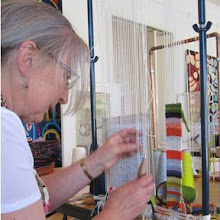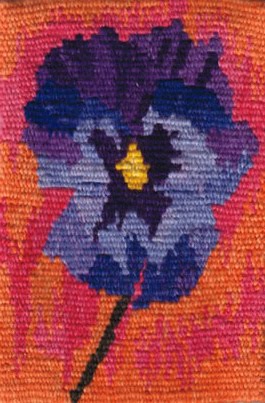Adorned: Textiles and Jewellery from Central Asia - A National Gallery of Victoria Exhibition in association with the Ararat Regional Art Gallery
28th May 2016 to 17th July 2016
UZBEK people, Woman’s coat (Munisak) (detail), Late 19th –
early 20th century, Uzbekistan, silk, cotton, (warp ikat, warp twining),
124.0 cm (centre back) 167.2 cm (cuff to cuff), National Gallery of
Victoria, Melbourne, Purchased with funds donated by Vivien Knowles,
2010 (2010.516)Adorned: Textiles and Jewellery from Central Asia draws on the collection of the National Gallery of Victoria to present a window onto the magnificent sartorial traditions of the vast Central Asian region stretching from China in the east to the Caspian Sea in the west, and between Russia in the north and Pakistan in the south. The exhibition, comprising over sixty works, explores textiles and jewellery from Central Asia through the distinctive traditions of two of the largest cultural groups of the region, the Uzbek and Turkmen peoples. Urban Uzbek mercantile communities were based in market towns along the Silk Road, and the nomadic Turkmen peoples lived on the steppes of Central Asia. Their textile skills, including dyeing, weaving and embroidery, and the distinctive styles and motifs of their garments are presented with jewellery from each culture.
Uzbek khans (rulers) controlled trading towns including Bukhara and Samarkand, where vividly coloured, boldly patterned silk robes worn by men and women were created within a guild system employing weavers and dyers. These sumptuous garments were worn with boldly patterned tunics and trousers, creating a cacophony of bright colours. They were accompanied with intricately wrought, delicate silver jewellery and lavishly embroidered hats and bags. The designs and materials of Uzbek textiles indicate status, the period they were made and the particular Uzbek community which made them.
The nomadic and agricultural Turkmen community also had a rich textile and jewellery tradition, producing splendid embroidered trappings for their prize horses and camels, and elaborate woven and embroidered textiles to embellish the felt yurts which sheltered Turkmen communities on their seasonal travels. Richly embroidered women’s mantles, and elaborate hats worn at ceremonies and festivals, constitute some of the more dramatic costume elements of Turkmen attire, along with gilt-silver and carnelian jewellery which is renowned for its monumental style and which functioned as a form of portable wealth. Individual Turkmen communities may be distinguished by costume elements including embroidery stitches and colour palettes.
The exhibition also includes a small group of Turkmen children’s garments which are characterised by elaborate embroidery and appliqué, reflecting the preciousness of children in the community and also performing a protective function. The garments and jewellery are embellished with numerous amuletic motifs and materials which shield the wearer from harm.








No comments:
Post a Comment